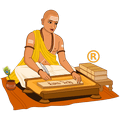























Sunrise05:13
Sunset19:12
Moonrise14:13
Moonset00:47, Aug 08
Shaka Samvat-2083 Manmatha
Vikram Samvat-1948 Durmati
Gujarati Samvat-1949 Parabhava
Amanta MonthAshwina
Purnimanta MonthAshwina
WeekdaySomawara
PakshaShukla Paksha
TithiNavami upto 10:30
NakshatraUttara Ashadha upto 22:18
YogaAtiganda upto 13:20
KaranaKaulava upto 10:30
KaranaTaitila upto 21:34
Pravishte/Gate16
Rahu Kalam06:58 to 08:43
Gulikai Kalam13:57 to 15:42
Yamaganda10:28 to 12:13
Abhijit11:45 to 12:41
Dur Muhurtam12:41 to 13:36
Dur Muhurtam15:28 to 16:24
Amrit Kalam16:13 to 17:44
Varjyam07:06 to 08:37
Varjyam02:07, Aug 08 to 03:39, Aug 08
Notes: All timings are represented in 24-hour notation in local time of Ceres, United States with DST adjustment (if applicable).
Hours which are past midnight are suffixed with next day date. In Panchang day starts and ends with sunrise.


 Tula
Tula Chitra 07:48
Chitra 07:48

 Tula 23:28
Tula 23:28 Swati 06:31
Swati 06:31

 Vrishchika 26:13+
Vrishchika 26:13+ Jyeshtha 26:13+
Jyeshtha 26:13+

 Kumbha 13:47
Kumbha 13:47 P Bhadrapada 19:47
P Bhadrapada 19:47

 Meena
Meena U Bhadrapada 20:05
U Bhadrapada 20:05

 Mesha
Mesha Ashwini 22:16
Ashwini 22:16

 Mesha
Mesha Bharani 24:12+
Bharani 24:12+

 Vrishabha
Vrishabha Rohini
Rohini

 Vrishabha 19:00
Vrishabha 19:00 Rohini 05:29
Rohini 05:29

 Mithuna
Mithuna Mrigashira 08:32
Mrigashira 08:32

 Mithuna
Mithuna Ardra 11:35
Ardra 11:35

 Mithuna 07:43
Mithuna 07:43 Punarvasu 14:22
Punarvasu 14:22

 Karka 18:26
Karka 18:26 Ashlesha 18:26
Ashlesha 18:26

 Tula
Tula Chitra 16:45
Chitra 16:45

 Vrishchika
Vrishchika Anuradha 10:42
Anuradha 10:42In Hindu Calendar, the day starts with local sunrise and ends with next day local sunrise. As sunrise time is different for all cities, Hindu Calendar made for one city is not valid for any other city. Hence it is important to use location based Hindu Calendar, like this website. Further, each Hindu day consists of five elements, which are called angas. These five elements are -
In Hindu Calendar, all five elements together are called Panchang. (In Sanskrit: Panchang = Pancha (five) + Ang (part)). Hence Hindu Calendar which shows all five elements for each day is called Panchang. In South India Panchang is known as Panchangam.
When Hindu Calendar includes Muslims, Sikh, Christian, Buddhist and Jain festivals, including national holidays, it is called as Indian Calendar.